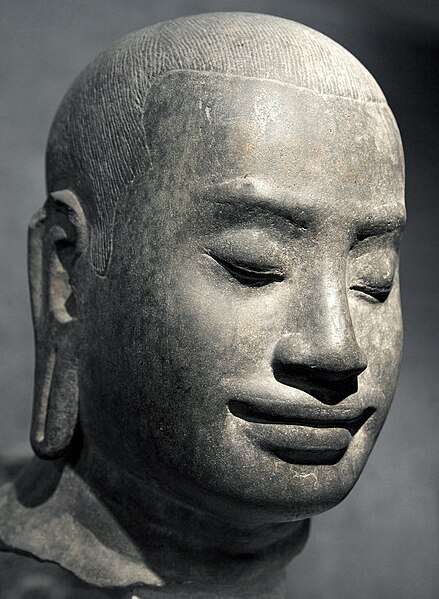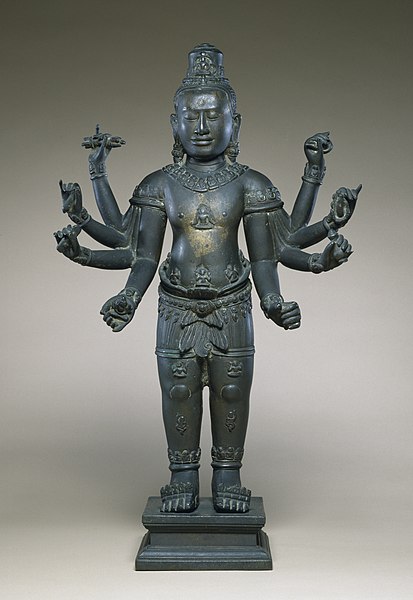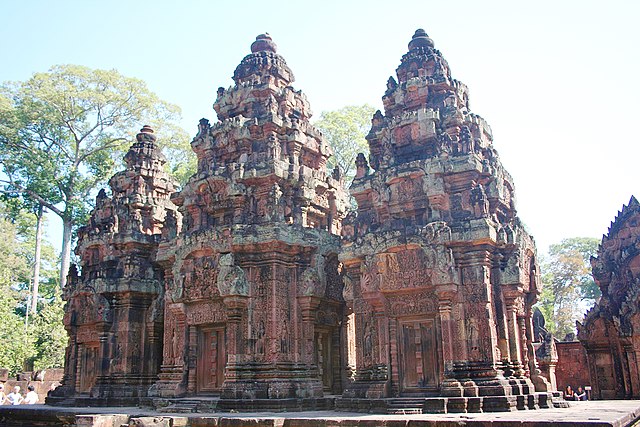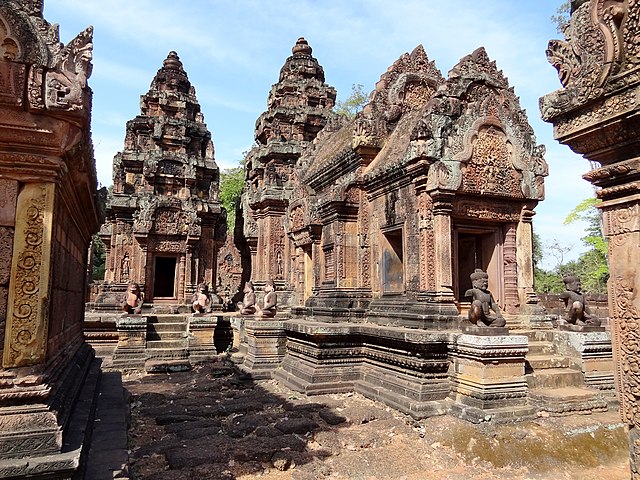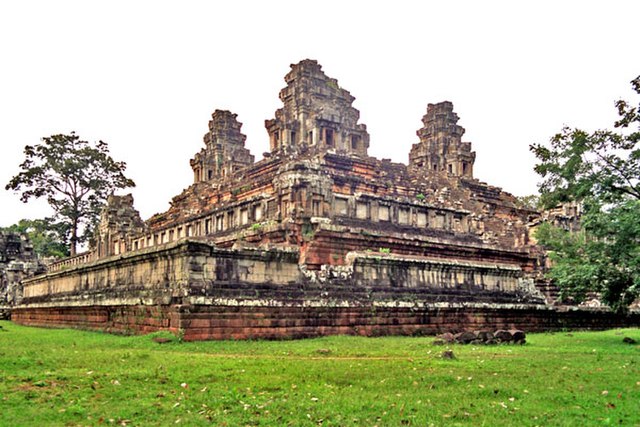Jayavarman VII, posthumous name of Mahaparamasaugata,, was king of the Khmer Empire. He was the son of King Dharanindravarman II and Queen Sri Jayarajacudamani.
He was the first king devoted to Buddhism, as only one prior Khmer king had been a Buddhist. He then built the Bayon as a monument to Buddhism. Jayavarman VII is generally considered the most powerful of the Khmer monarchs by historians. His government built many projects including hospitals, highways, rest houses, and temples. With Buddhism as his motivation, King Jayavarman VII is credited with introducing a welfare state that served the physical and spiritual needs of the Khmer people.
Bust of Jayavarman VII, Guimet Museum
Bronze replica of one of the twenty-three stone images King Jayavarman VII sent to different parts of his kingdom in 1191. The Walters Art Museum.
Jayavarman VII is commonly depicted with both his arms amputated.
Image: Jayavarman vii
The Khmer Empire was a Hindu-Buddhist empire in Southeast Asia, centered around hydraulic cities in what is now northern Cambodia. Known as Kambuja by its inhabitants, it grew out of the former civilisation of Chenla and lasted from 802 to 1431. Historians call this period of Cambodian history the Angkor period, after the empire's most well-known capital, Angkor. The Khmer Empire ruled or vassalised most of mainland Southeast Asia and stretched as far north as southern China. At its peak, the Empire was larger than the Byzantine Empire, which existed around the same time.
Temple of Banteay Srei, built 967 A.D.
Bakong, one of the earliest temple mountains in Khmer architecture
Banteay Srei, a 10th-century Cambodian temple dedicated to the Hindu god Shiva
Ta Keo, a state temple built around the year 1000

